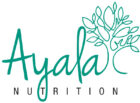What is Type 2 Diabetes?
Let’s start at the beginning. Type 2 diabetes is the most common form of diabetes. It means that your body isn’t using insulin you have correctly (this might mean your body isn’t producing enough insulin or your body has become resistant to the insulin it is producing). Why does this matter? Insulin is what helps us maintain steady blood sugar/glucose levels throughout our day.
How is diabetes diagnosed?
Diabetes is usually diagnosed with at least two abnormal glucose levels on two different days. There are a couple labs that can be used to indicate diabetes: A1C or a fasting blood glucose. An A1C blood test measures your average blood glucose level for the last 2-3 months. Your doctor may also use a fasting blood glucose lab which is a snapshot of your glucose level in that moment.
| A1C | Fast Blood Glucose | |
| Normal | <5.7% | <100 mg/dl |
| Prediabetes | 5.7-6.4% | 100-125 mg/dl |
| Diabetes | 6.5% or greater | 126 mg/dl or greater |
Nutrition Counseling in the Prevention and Treatment of Diabetes
You may be wondering where food and nutrition counseling comes into play here. All the food we eat is broken down into glucose so what we eat and how much we eat effect our blood sugar levels. The American Diabetes Association recommends working with a Registered Dietitian Nutritionist to develop a meal plan that works for you.
“Does diabetes mean I have to stop eating carbs?” is probably the most common question I get from new clients recently diagnosed with diabetes. Absolutely not! My nutritional guidance when working with someone diagnosed with diabetes compared to other clients is very similar. I focus on balanced eating of the food groups to create meals or snacks that are satisfying and filling. We will focus on regular, consistent eating throughout the day to maintain steady blood sugar levels. While there may be some discussion around portion sizes for foods containing carbohydrates, you will never be told to “cut” out any of them.
We will also focus on other topics that can be important for diabetes such as hydration, fiber, recognizing symptoms of low blood sugars and moving our bodies in a way that is both enjoyable and healthy for everyone.
References: The American Diabetes Association is a wonderful resource if you have recently been diagnosed with prediabetes or diabetes. Most of the information from this post has been taken from their website. Check out their website for additional tips, recipes and more.

